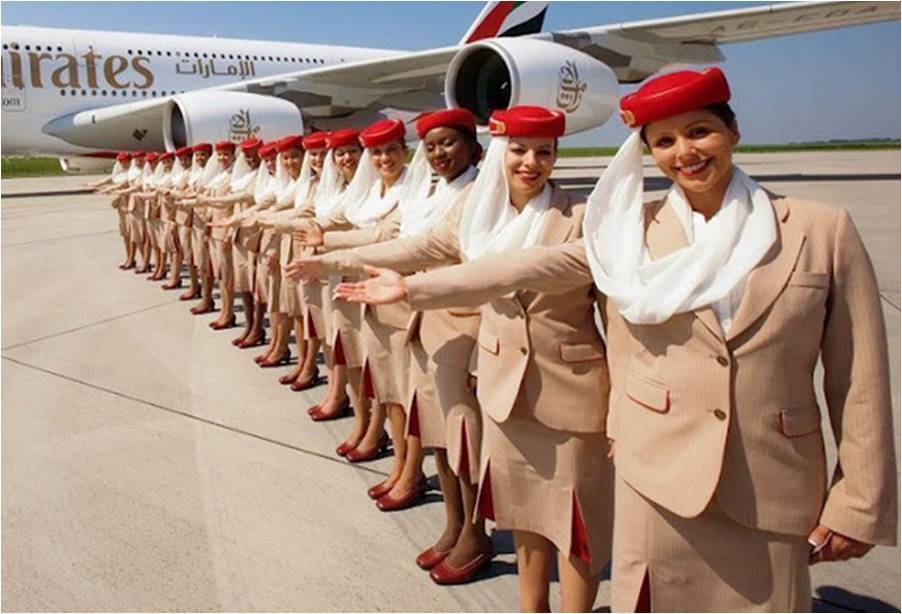- Nigeria to Lose $68m to Saudi Arabian Airlines for 2017 Hajj Exercise
Nigeria risks loosing $68million to the Kingdom of Saudi Arabia during the forthcoming 2017 hajj, following the allocation of 45 percent of the total pilgrims to a Saudi Arabia-based airline, FlyNas, by National Hajj Commission (NAHCON).
Already, local stakeholders in the sector have raised eyebrow as they described the move as a “rip off that has the capacity to stunt growth in Nigeria airline industry.”
A source also said that already “Airline business is mega box conducted in dollars and 45 per cent simply translated to a big minus to Nigeria because the country will lose so much money.”
In total, 95,000 Nigerian would be performing the 2017 hajj that attracted the lowest fee of N1,500,000 covering flight ticket, royalty, accommodation, intra and inter city travels and host of others.
Investigation revealed that NAHCON’s decision to engaged the services a Saudi Arabia-based airline Fly Nas for 2017 hajj was a lopsided policy that has further worsen unfavorable trade balance with the Saudis.
Commenting further on the implications of such policy, the aviation source said: “Instead of encouraging our indigenous airliners, NAHCON has ended up sending them away from the business circle in favour of a foreign airline. It is high time for the federal government to come to the aide of indigenous airliners before it is too late.”
But NAHCON Chief Media Relation Officer, Alhaji Adamu Hassan Abdullahi, in a telephone chat, confirmed the allocation of 45 per cent of total number of Nigerian pilgrims to Flynas, saying “it was a policy introduced by Saudi authority.”
He dismissed the anticipatory loss as ruse, stressing that “Nigeria is not going to lose $68million as claimed by the service providers.”
Similarly, there had been groundswell of protest across the 36 states pilgrims welfare boards over what they called “unilateral decision of NAHCON to impose carrier on them contrary to what was obtained in the past.
It was also learnt that in recent meeting held at Saudi Arabia by top Nigerian pilgrimage officials, they agreed among other things to fought and exert their independence and block overbearing influence of the regulatory agency.
the source said the process was still one but from the look of things, NAHCON would not do justice to the state pilgrims’ boards, as according to him if care is not taken, the commission will just allocate airlines to states without consulting the states as it does last year.
When contacted, the National Hajj Commission Chief Media Relation Officer, Alhaji Adamu Hassan Abdullahi in a telephone chat noted that the Hajj regulatory agency was not blame for the policy.
“the Saudi Authority imposed Flynas on countries participating in hajj operation, and according to the policy each country must allocate 50 per cent of its total pilgrims to Flynas.”
Speaking further, “NAHCON chairman insisted that it should not be 50/50 and because of the good relationship between Nigeria and Saudi, we are allowed to allocate 45 per cent instead of 50 per cent.”
He said “unlike Nigeria, Niger Republic and Senegal had to allocate all their pilgrims to Flynas because Kabo air that usually operates in the two countries was denied a chance for being a foreign airline, and to be honest with you, Nigeria is not going to lose $68million as claimed by the service providers”.
Consequently, NAHCON image Maker advised the service providers to blame Saudi Authorities and not the Hajj regulatory agency.
He said instead, NAHCON is fighting for Nigerian businessmen, as according to him the commission is in discussion with the Saudi Chamber of Commerce to see how Nigerian businessmen can import goods to Saudi during hajj.


 Forex4 weeks ago
Forex4 weeks ago
 Naira3 weeks ago
Naira3 weeks ago
 Billionaire Watch3 weeks ago
Billionaire Watch3 weeks ago




 Naira3 weeks ago
Naira3 weeks ago








 Naira3 weeks ago
Naira3 weeks ago


 Naira2 weeks ago
Naira2 weeks ago








 Naira2 weeks ago
Naira2 weeks ago








 Naira4 weeks ago
Naira4 weeks ago























